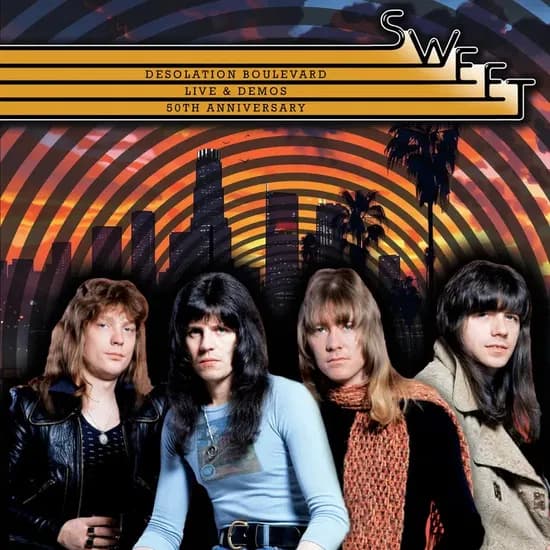
When Glam Rock Got Heavy: The Existential Panic of a Band Fighting for Freedom
Ah, the mid-seventies. For the real aficionados of rock history, that era represents a pivotal, fascinating point for bands like Sweet. They were shedding the bubblegum-glam skin that had made them global superstars and transforming into the pure, unadulterated hard-rock machine they always felt they were. No song better encapsulates this dramatic, almost existential transition than “White Mice,” a deep-cut powerhouse from their 1976 album, Give Us a Wink.
Let’s be clear from the outset: “White Mice” was not a single. You wouldn’t have seen Brian Connolly, Steve Priest, Andy Scott, and Mick Tucker miming to it on Top of the Pops. It existed purely as an album track, and because of that, it carried an authenticity that the commercially released singles often couldn’t touch. It didn’t trouble any charts, but its impact on those of us who bought Give Us a Wink—the first album fully written and produced by the band themselves—was profound. It signaled a new, heavier maturity, following their split from hit-makers Chinn and Chapman.
The story behind “White Mice” is the story of a band’s creative liberation. The album, recorded in Munich’s famed Musicland Studios (the same place where Deep Purple and Led Zeppelin had just laid down monumental tracks), saw Sweet embracing longer, more complex song structures and exploring darker lyrical themes. The track itself is attributed to all four members (Connolly/Priest/Scott/Tucker), a testament to the collaborative furnace that was their new working environment.
At nearly five minutes, “White Mice” is an atmospheric, almost psychedelic piece of hard rock. Its meaning is shrouded in a captivating ambiguity that still sparks conversation. On the surface, the lyrics are full of surreal, dream-like imagery and what sounds like laboratory or psychological references. However, the prevailing and most emotionally resonant interpretation is that the “white mice” represent the human struggle against forces beyond their control, or perhaps the psychological demons of anxiety, fame, and addiction. It’s a dark, introspective look at the panic and paranoia that can lurk just behind the spotlight’s glare—a very real narrative for a band dealing with the intense pressures of seventies stardom, particularly the struggles faced by Brian Connolly.
The track’s music perfectly mirrors this sense of unsettling tension. It’s driven by a swirling, multi-layered arrangement, featuring Andy Scott’s adventurous guitar textures, heavy use of early synthesizers to create a swirling, almost disorienting soundscape, and an absolutely titanic, propulsive rhythm section provided by Steve Priest and Mick Tucker. For us older listeners, this track is a treasure—a reminder that Sweet was never just a ‘glam-pop’ group. They had the chops, the depth, and the courage to write genuinely progressive hard rock. It’s the perfect mood piece for a late-night session with the headphones on, letting the complex harmonies and furious energy take you back to a time when rock and roll was still a glorious, unpredictable rebellion. It remains the ultimate Sweet deep cut, offering a glimpse of the heavy, experimental path they chose for themselves.